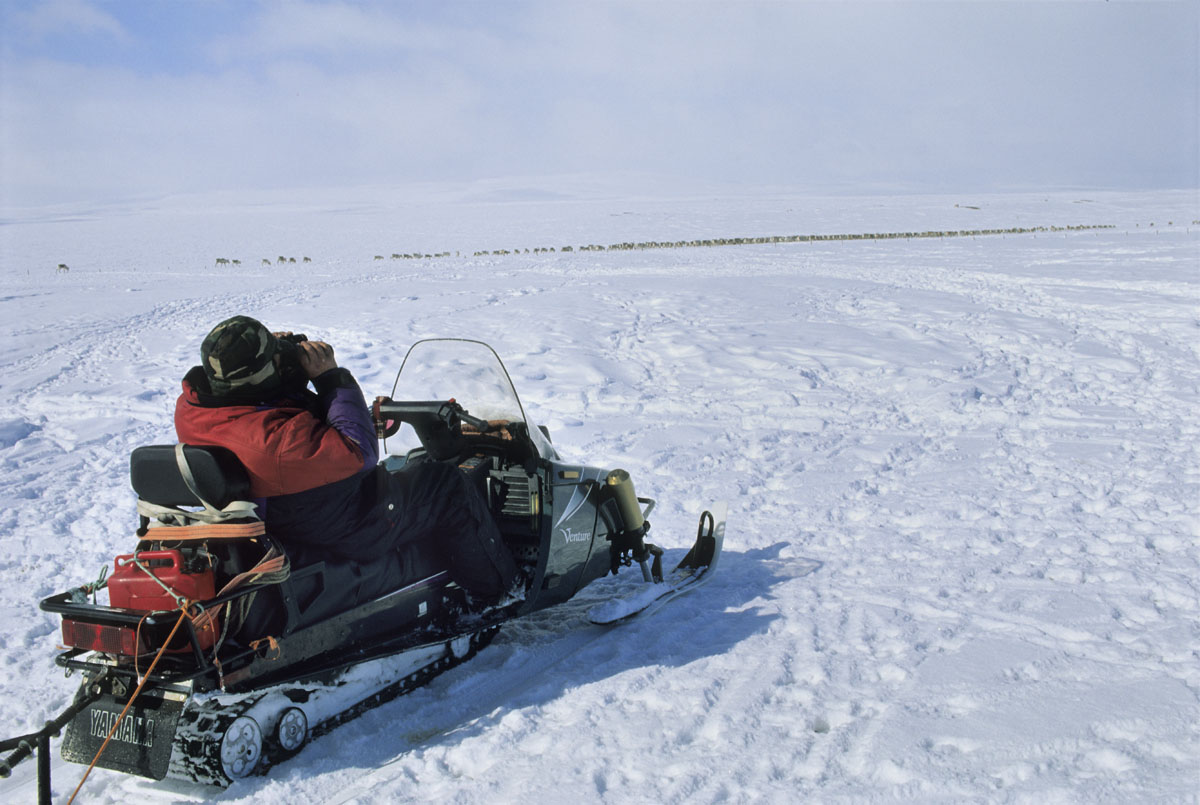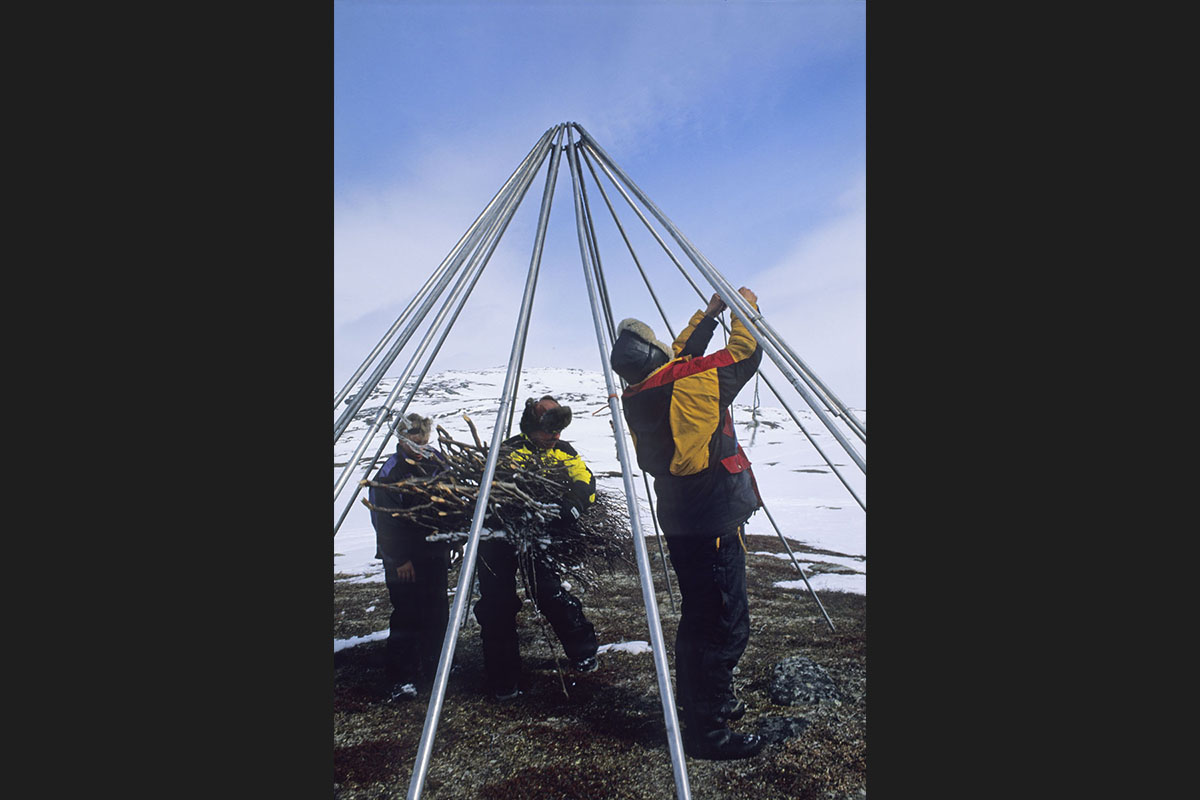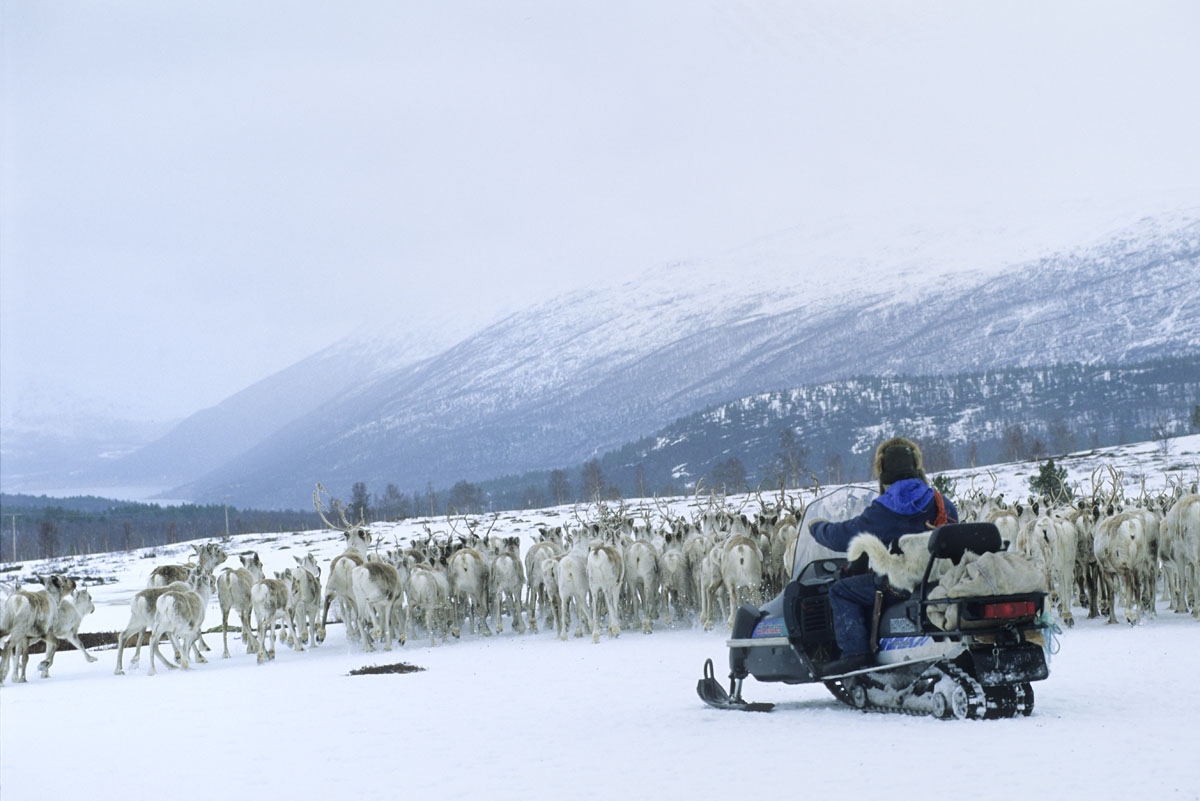THE GREAT REINDEER MIGRATION
More numerous in Norway then the other Scandinavian countries, the Samis, or Lapps, live mainly around the municipalities of Kautokeino and Karasjok where the economy is built on the raising of reindeer. Today semi-nomads, many of them still live to the rhythm of the great transhumances. The migration north takes place at the end of April, early May, before the spring thaw that transforms the Finnmark plateau into an immense swamp infested with mosquitoes. In summer, the animals graze their fill on the rich pasturelands that border the icy Arctic Ocean. Then, with the first signs of autumn, always early at these latitudes, the deer finally start the return journey, driven along by the herders who have now swapped their snowmobiles for trail bikes. It’s the does who, since time immemorial, give the signal for the transhumance: the clouds of mosquitoes that mark the arrival of spring put their offspring in danger. They instinctively head North towards the freezing Arctic Ocean where they find better food and more favorable conditions for giving birth. Much weakened by the long winter, the herd progresses at an average of 20 kilometers per day. The deer have to continuously paw at the snow to find the lichen that serves as their food. Their progress is frequently slowed by freezing rains or snowstorms that form a thick layer difficult to pierce. It takes them nearly a week to cover 150 to 200 kilometers, crossing the high plateaus of Finnmark and the mountains down to the sea, where the boats that carry them to their summer pasture await.
The Samis on their snowmobiles take turns guiding the deer, throughout the day and night, moving along at the herds’ rhythm. As to the sun, it no longer sets, upsetting all notion of space and time…



















